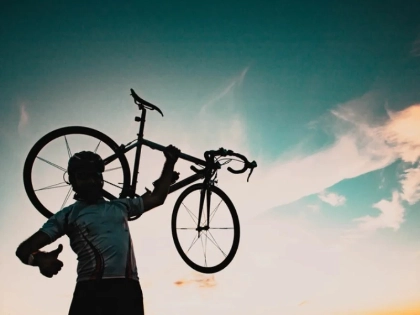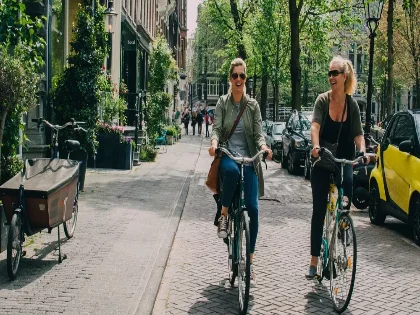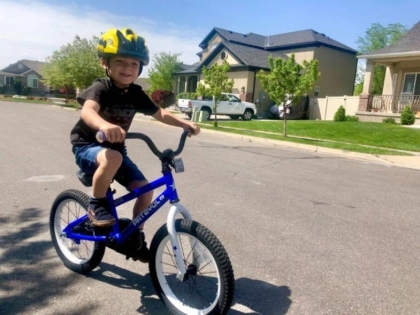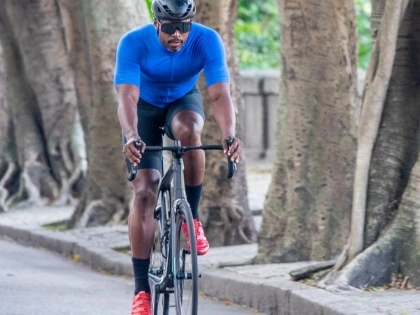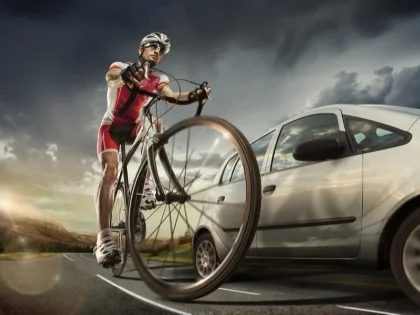What Makes Cycling Different from Bicycling?
Cycling may be a fun and healthy way to spend your time, whether you're racing your pals down a difficult mountain path or cruise along a picturesque trail. Indeed, a recent study discovered that frequent cyclists have reduced levels of obesity and other risk factors, as well as better heart health.
Biking
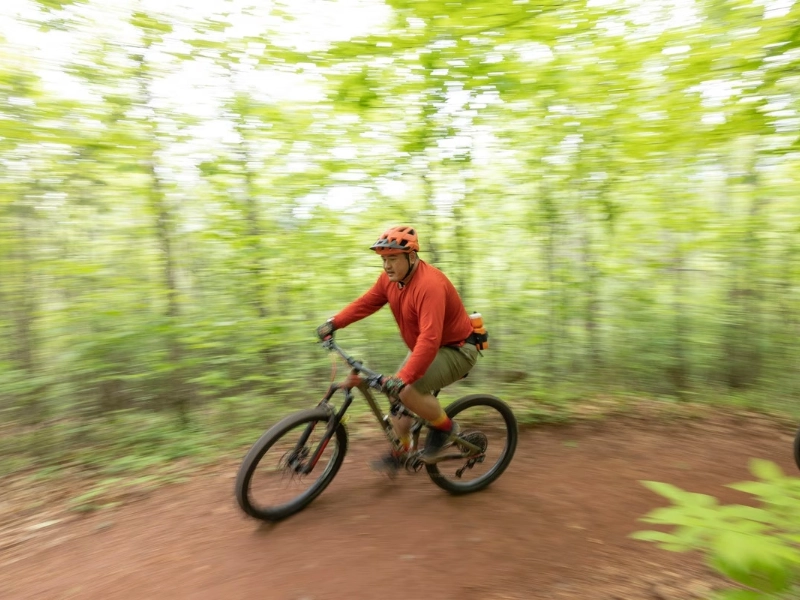 Riding a bicycle is a great way to take in the scenery, push your physical limits, and improve your fitness. Whether you're riding around the neighborhood or preparing for an Olympic event, it's simple to adjust the intensity to your level of fitness.
Moreover, it's a low-impact exercise, so your joints won't be pounded as they would be by running or basketball. Biking's advantages for your heart, lungs, and muscles can lower your risk of developing serious illnesses and increase your life expectancy.
Your balance gets better while you ride, which can help avoid fractures and falls, particularly as you get older or if you have health issues or injuries that affect your balance. Consult your physician and physical therapist about incorporating cycling into your regimen if you have a medical problem. They might advise using an elliptical, stationary bike, or adaptive bike in addition to other cardio exercises like rowing and stair climbing.
Riding a bicycle is a great way to take in the scenery, push your physical limits, and improve your fitness. Whether you're riding around the neighborhood or preparing for an Olympic event, it's simple to adjust the intensity to your level of fitness.
Moreover, it's a low-impact exercise, so your joints won't be pounded as they would be by running or basketball. Biking's advantages for your heart, lungs, and muscles can lower your risk of developing serious illnesses and increase your life expectancy.
Your balance gets better while you ride, which can help avoid fractures and falls, particularly as you get older or if you have health issues or injuries that affect your balance. Consult your physician and physical therapist about incorporating cycling into your regimen if you have a medical problem. They might advise using an elliptical, stationary bike, or adaptive bike in addition to other cardio exercises like rowing and stair climbing.
Cycling
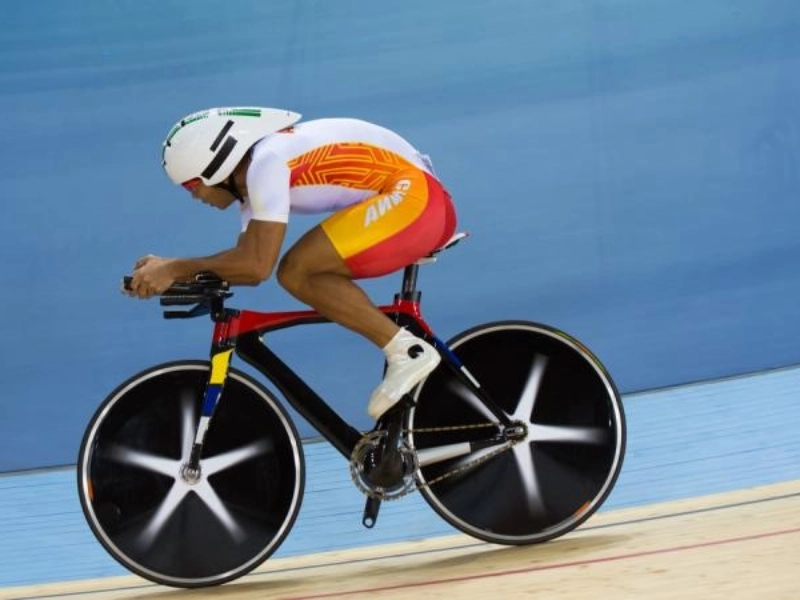 Cycling is a great low-impact fitness option. It can strengthen your muscles, elevate your mood, and strengthen your heart. It can also help you become more flexible and lose weight.
Conversely, the term "biking" describes the activity of riding a bicycle. It can be done outside or indoors, based on your fitness objectives and personal preferences.
Bicycles come in a wide variety of styles, such as cruiser bikes, hybrid bikes, road bikes, and mountain bikes. While some versions are intended for racing, others are more for leisure use. Some come equipped with accessories like a hitch for a trailer, an additional saddle, or a child seat.
Riding a bicycle is a great way to keep in shape and stay healthy, but if you don't do it right, it can also hurt the environment. For this reason, it's critical to understand the distinction between riding and biking in order to make an informed choice regarding your lifestyle.
Cycling is a great low-impact fitness option. It can strengthen your muscles, elevate your mood, and strengthen your heart. It can also help you become more flexible and lose weight.
Conversely, the term "biking" describes the activity of riding a bicycle. It can be done outside or indoors, based on your fitness objectives and personal preferences.
Bicycles come in a wide variety of styles, such as cruiser bikes, hybrid bikes, road bikes, and mountain bikes. While some versions are intended for racing, others are more for leisure use. Some come equipped with accessories like a hitch for a trailer, an additional saddle, or a child seat.
Riding a bicycle is a great way to keep in shape and stay healthy, but if you don't do it right, it can also hurt the environment. For this reason, it's critical to understand the distinction between riding and biking in order to make an informed choice regarding your lifestyle.
Equipment
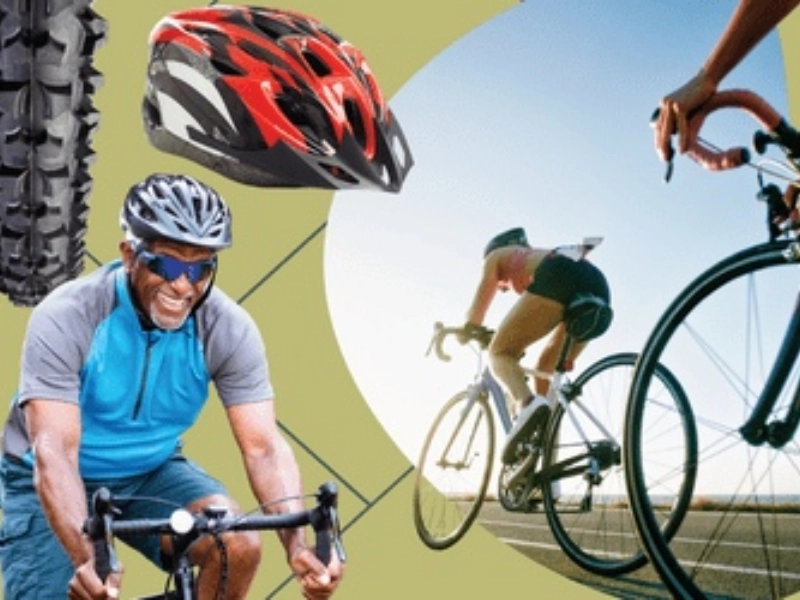 A bicycle (as well as bike parts) and cycling-specific apparel, such as shoes, gloves, long pants, jackets, and overshoes, are necessary pieces of equipment for cycling. In addition, cyclists require accessories such as a bell, a cycling computer, a pump, and a puncture repair kit. The helmet must also comply with US Consumer Product Safety Commission regulations.
Riding a dirt track at high speed or ascending a mountain with friends, biking is generally thought of as a joyful and relaxed pastime. It may even be a practical means of transportation within the office or neighborhood.
However, biking can also be a useful kind of exercise to maintain a healthy weight and enhance lung and cardiovascular health. It can take the place of sedentary activities like driving or taking public transportation, and it's also a time-efficient mode of transportation. According to a 2019 study, cycling can help patients with chronic obstructive pulmonary disease improve their lung function. But cycling should be done moderately and at a comfortable level, just like any other activity.
A bicycle (as well as bike parts) and cycling-specific apparel, such as shoes, gloves, long pants, jackets, and overshoes, are necessary pieces of equipment for cycling. In addition, cyclists require accessories such as a bell, a cycling computer, a pump, and a puncture repair kit. The helmet must also comply with US Consumer Product Safety Commission regulations.
Riding a dirt track at high speed or ascending a mountain with friends, biking is generally thought of as a joyful and relaxed pastime. It may even be a practical means of transportation within the office or neighborhood.
However, biking can also be a useful kind of exercise to maintain a healthy weight and enhance lung and cardiovascular health. It can take the place of sedentary activities like driving or taking public transportation, and it's also a time-efficient mode of transportation. According to a 2019 study, cycling can help patients with chronic obstructive pulmonary disease improve their lung function. But cycling should be done moderately and at a comfortable level, just like any other activity.
Security
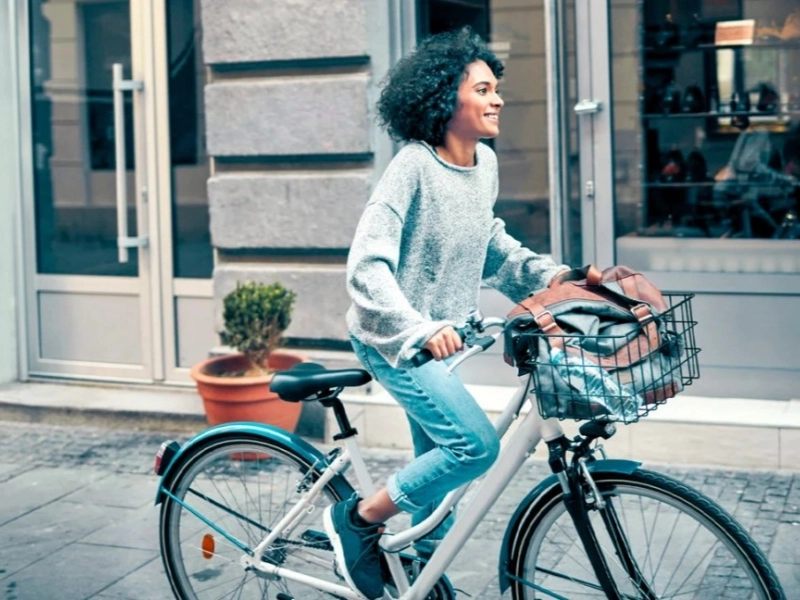 Cycling and riding a bike can be a fun, healthy, and environmentally responsible way to get some exercise. Both of these hobbies, meanwhile, have some potential for risk, so it's crucial to use caution when driving.
When cycling, always wear a helmet. Verify if the helmet fits correctly and has a Consumer Product Safety Commission certification. When cycling at night or in the early morning, wear luminous clothing to make yourself more visible to other drivers. Respect every traffic law. You and other drivers are put in danger when you run stop signs and other traffic signals.
To keep control of the bike, always keep both hands on the handlebars. Slow down and only pass a bicyclist if it is safe to do so. Make careful to allow a minimum of 3 feet (1 meter) space between your bicycle and any parked cars on the street in case one of them decides to open its door unexpectedly.
Cycling and riding a bike can be a fun, healthy, and environmentally responsible way to get some exercise. Both of these hobbies, meanwhile, have some potential for risk, so it's crucial to use caution when driving.
When cycling, always wear a helmet. Verify if the helmet fits correctly and has a Consumer Product Safety Commission certification. When cycling at night or in the early morning, wear luminous clothing to make yourself more visible to other drivers. Respect every traffic law. You and other drivers are put in danger when you run stop signs and other traffic signals.
To keep control of the bike, always keep both hands on the handlebars. Slow down and only pass a bicyclist if it is safe to do so. Make careful to allow a minimum of 3 feet (1 meter) space between your bicycle and any parked cars on the street in case one of them decides to open its door unexpectedly.

